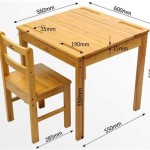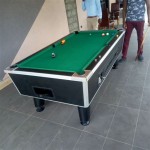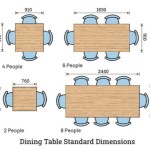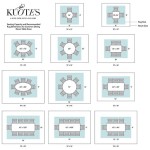Baby Crib With Changing Table: A Comprehensive Guide
The arrival of a new baby often necessitates a significant overhaul of living space. Parents face the challenge of creating a functional and comfortable environment for their child, while also maximizing limited space. One solution that addresses both these needs is the baby crib with changing table. This integrated unit combines the essential elements of a safe sleeping space and a convenient changing area, streamlining nursery design and optimizing parental efficiency.
This article will explore the multifaceted benefits of baby cribs with changing tables, delving into their design variations, safety considerations, and practical advantages. It will provide an in-depth analysis of the features parents should prioritize when selecting such a unit, ensuring an informed purchasing decision that caters to the unique requirements of their family and nursery space.
Space Optimization and Functional Design
Baby nurseries are often confined spaces, especially in urban dwellings or smaller homes. Traditional nursery furniture sets, comprising a separate crib, changing table, and dresser, can quickly overwhelm the room, leaving limited space for other activities. The baby crib with changing table elegantly addresses this issue by consolidating two essential functions into a single piece of furniture. The changing table is typically attached to one end of the crib, either as a permanent fixture or as a detachable addon. This configuration significantly reduces the overall footprint required, freeing up valuable floor space for play areas, rocking chairs, or other essential items. This space-saving element is particularly beneficial for parents living in apartments or homes with limited square footage.
Furthermore, the integrated design promotes efficiency and convenience. Parents can seamlessly transition from changing the baby to placing them back in the crib for napping or sleeping, minimizing movement and reducing the risk of accidental bumps or falls. This proximity is especially advantageous during nighttime feedings or diaper changes, allowing parents to respond quickly and efficiently to the baby's needs without having to traverse a cluttered or poorly lit room.
The functional design extends beyond mere space saving. Many baby cribs with changing tables incorporate built-in storage solutions, such as drawers, shelves, or cabinets. These compartments provide ample space for storing diapers, wipes, creams, clothing, blankets, and other essential baby supplies. This organized storage allows parents to keep everything within easy reach, eliminating the need for separate storage units and further optimizing nursery space. The strategic placement of these storage features near the changing table facilitates quick and efficient diaper changes, minimizing disruption to the baby and streamlining the caregiving process.
The design variations are considerable. Some cribs offer a changing table that is permanently attached and features a contoured changing pad with safety straps. Others provide a detachable changing table that can be removed once the baby outgrows diapers, transforming the unit into a standard crib. Still others feature a changing table that can be used as a standalone dresser later on, maximizing its long-term usability. The choice depends on individual preferences, space constraints, and budget considerations.
Safety Considerations and Regulatory Standards
The safety of the baby is paramount when selecting any nursery furniture, and baby cribs with changing tables are no exception. Parents must meticulously examine the unit's construction, materials, and safety features to ensure it meets or exceeds relevant safety standards and regulations. Adherence to these standards provides assurance that the crib has undergone rigorous testing to minimize potential hazards.
One crucial aspect is the structural integrity of the crib. It should be constructed from durable materials, such as solid wood or sturdy metal, and designed to withstand the rigors of daily use. The crib's frame should be free of sharp edges, splinters, or protruding hardware that could pose a risk of injury to the baby. The slats of the crib should be spaced no more than 2 3/8 inches apart to prevent the baby's head from becoming entrapped. The mattress support should be securely attached and adjustable to accommodate the baby's growth.
The changing table portion of the unit also demands careful scrutiny. The changing pad should be made of a non-toxic, waterproof material that is easy to clean and sanitize. It should be equipped with safety straps or a contoured design to prevent the baby from rolling off the table during diaper changes. The edges of the changing table should be smooth and rounded to minimize the risk of bumps or scrapes. Adequate guardrails, typically at least two inches high, should surround the changing pad to provide additional protection.
Parents should also be mindful of the materials used in the crib's construction. Look for cribs that are made from non-toxic paints, stains, and finishes that are free of lead, phthalates, and other harmful chemicals. Check for certifications from organizations such as the Greenguard Environmental Institute, which indicates that the crib has been tested for chemical emissions and meets stringent indoor air quality standards. This is particularly important for babies, who are more susceptible to the harmful effects of chemical exposure.
Furthermore, it is crucial to adhere to the manufacturer's instructions for assembly and use. Improper assembly can compromise the crib's structural integrity and increase the risk of accidents. Always use the correct mattress size and ensure that it fits snugly within the crib frame. Never place pillows, blankets, or toys in the crib, as these items can pose a suffocation hazard. Regularly inspect the crib for any signs of wear or damage, such as loose screws, cracked wood, or frayed edges, and address these issues promptly.
Compliance with safety standards is not merely a suggestion; it is a necessity. In the United States, the Consumer Product Safety Commission (CPSC) sets mandatory safety standards for cribs. Parents should ensure that the crib they purchase meets these standards, which are designed to minimize the risk of injury or death. Check the product packaging or the manufacturer's website for information on safety certifications and compliance with relevant regulations.
Long-Term Value and Adaptability
While the initial cost of a baby crib with changing table may seem higher than that of a standard crib, the long-term value and adaptability of the unit often justify the investment. Many models are designed to convert into toddler beds, daybeds, or even full-size beds, extending their lifespan and providing years of use. This adaptability eliminates the need to purchase separate beds as the child grows, saving money and reducing clutter.
The changing table portion of the unit can also be repurposed once the baby outgrows diapers. As mentioned earlier, some models feature detachable changing tables that can be used as standalone dressers or nightstands. This versatility allows parents to continue using the furniture in the nursery or elsewhere in the home, maximizing its value and minimizing waste.
The integrated storage solutions provided by baby cribs with changing tables offer long-term benefits as well. The drawers, shelves, and cabinets can be used to store clothing, toys, books, or other items as the child grows older. This organized storage helps to keep the room tidy and functional, even as the child's needs and belongings evolve.
Furthermore, the design of many baby cribs with changing tables is timeless and versatile, allowing them to blend seamlessly with a variety of decor styles. This adaptability ensures that the furniture will remain aesthetically pleasing and functional for years to come, regardless of changes in personal taste or home decor. Parents can choose from a wide range of finishes, colors, and styles to find a crib that complements their existing furniture and creates a cohesive and inviting nursery environment.
The potential for resale also contributes to the long-term value of baby cribs with changing tables. Well-maintained units can often be sold or donated to other families once the child outgrows them, recouping some of the initial investment and reducing waste. This option is particularly attractive for parents who are environmentally conscious or who plan to have more children in the future.
Ultimately, the decision to purchase a baby crib with changing table is a personal one that depends on individual needs, preferences, and budget considerations. However, the space-saving design, safety features, and long-term value of these units make them a compelling option for parents seeking to create a functional and comfortable nursery environment.
By carefully considering the factors outlined in this article, parents can make an informed purchasing decision that ensures the safety, comfort, and well-being of their child while maximizing the efficiency and functionality of their nursery space. The right baby crib with changing table can provide years of reliable service and contribute to a positive and nurturing environment for both parent and child.

Huluwat Natural Wooden Crib With Attached Changing Table Djyc G B02257202 The Home Depot

Oxford Baby Pearson 4 In 1 Convertible Crib Changing Station Dove Gray Greenguard Gold Certified Wooden Com

Baby Relax Emma Crib And Changing Table Combo Bed Bath Beyond 9490081 Cribs

Convertible Crib And Changer Combo 3 In 1 Changing Table With Drawer Converts To Toddler Bed Cherry Com

Brody Full Panel Convertible Crib With Changer Dream On Me

Harper Bright Designs Convertible White Crib Full Size Bed With 3 Adjustable Height Options And Changing Table Combo Qmy207aak The Home Depot

Dream On Me Casco 4 In 1 Mini Crib Changing Table

Convertible Baby Crib Changer Changing Table Drawers Shelf White Toddler Daybed

Anna 3 In 1 Full Size Crib Changing Table Combo Dream On Me

Adjustable Espresso Baby Cot Crib With Changing Table China Made In Com
Related Posts








